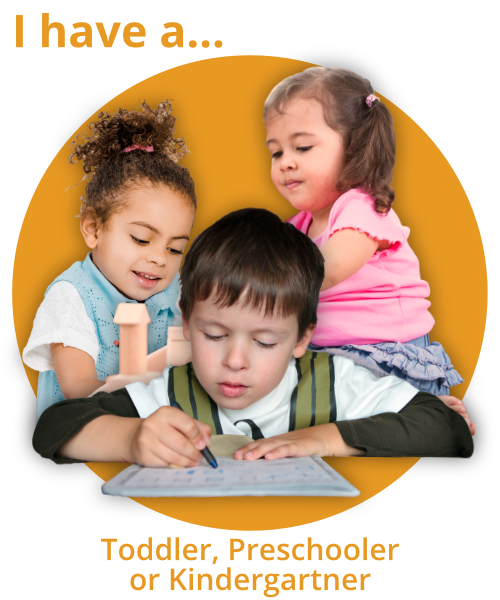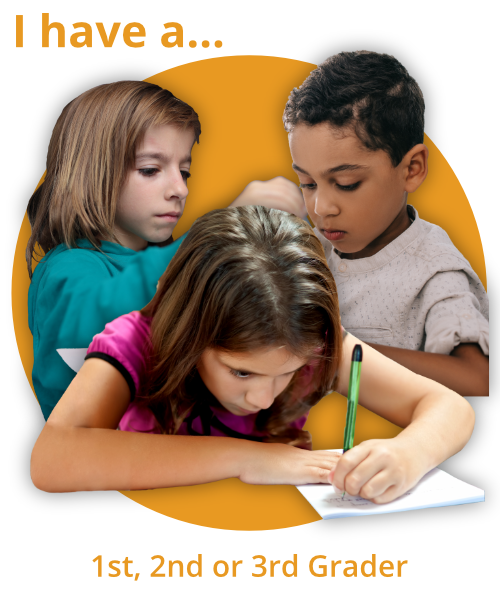Teachable Moments
I'm Aubrey Hargis, Montessorian and mom of two. If there's one thing I know it’s that teaching your own children requires a lot of courage you might not think you have it. But actually, all of us are blessed with the capacity for it. And when we fail, it is good news, we can learn what we need to do next to make it better. Because education is a journey we take with our children, and the opportunities for learning start over every day.
Hey Sweet Friend
This past week, my husband David and I went live together on ZOOM to chat about the new lower elementary program. If you've been in any of my courses recently, you probably know David as our tech guy, the graphic designer, my video editor, the membership coordinator who keeps our rosters straight, and our financial accountant who keeps my math-riddled brain straight when it comes to the financial aspect of our business...but he actually does a whole lot more than that in our company as a whole!
David and I met working together at the University Writing Center as tutors. After we graduated, we got married, and we spent the next several years teaching together. We didn't teach in the same classrooms; he taught in high schools, and I taught in elementary schools. Everybody always said to us: “Oh, you guys have parenting all sewn up. When you have kids, it'll be so easy. Both age groups, you got it!” Of course, that’s not true. Parenting is so much more complicated than classroom teaching!
David is a progressive educator, just as I am a progressive educator and a Montessorian. Montessori was new to him when we met, but he quickly became enamored with the idea of the approach, and it was certainly very aligned with what he was learning about education himself and experiencing in his classroom. After teaching, he took another path: he went into writing curriculum, then program designing and managing and creating products for other companies. I decided to stay home with our children, and we decided to homeschool our kids. We've been married for 20 years now. The point of this is to say that even though I'm the one that you usually talk to in Child of the Redwoods, it is actually the brainchild of both of us.
David is not just the person that I live with and the person I like to ask for tech support. He actually is an integral part of what we do, how we actually provide courses, curriculum, and community to our members. He makes what we do, not just possible, but better. Most of the ideas for what happens inside our whole business happen when David and I are on a long hike. We end up talking about education, because we love to just tease out ideas about what might be possible or what's better for learners, both our own kids and for adult education. It really is something that we do together. Recently, we have been digging into the lower elementary curriculum for Montessori. Now I've been trained in lower elementary Montessori for a long time. I have a lot of background knowledge myself, but it was really exciting for me to take a look at the curriculum and how we might take these lessons and apply it into a format that's easy for parents to understand and implement in their own homes. So we've just been doing so much work on that together he's become somewhat of a lower elementary expert himself by doing all of the editing and a lot of the planning along with me as we have these conversations about what we're teaching. Of course, he's also aware of how we taught our own children during those lower elementary years with the Montessori approach. So it's just been this really fun adventure for us to go on this trip thinking about how we taught our own kids, and how to make lower elementary Montessori more accessible to parents. The program that we together designed and created that I will be teaching is now open for enrollment for parents of children ages six to nine. The doors for the Fall session close on September 9th, 2021. So if you're interested, definitely go check it out!
In preparation for the sessions beginning, David and I decided to have two conversations live, free for anyone to come and chat with us about what makes the Montessori curriculum so incredibly unique and amazing. We talked about a lot of our experiences homeschooling our own kids. If you want to watch the entire thing, the recordings for both live sessions are still available right now for you to watch for a limited time on our website.
Today’s Episode
What I am doing for our podcast episode today is I am going to repost a snippet from one of the conversations that we had live recently. This is relevant no matter how old your child is! David makes this beautiful analogy that compares the subjects that you're teaching to a painter's palette. He also gives a fun example at the end of this conversation of a teachable moment, which is just a lesson that you don't plan! One which happens in the course of living. Teachable moments are critical for homeschool success. Unlike teaching in a classroom, when we are at home, we're just focusing on a few children at a time, and we don't necessarily just have a big list of lessons with all these materials on the shelves to choose from at any given moment. We are actually in the world with our children, living regular daily life.
How Much Time It Takes to Homeschool
As a homeschooling parent, I need you to know, you can do this! Humans have an innate desire to learn. They have an innate ability to teach as well because the two are intricately tied together. You can't do one without the other. In fact, to learn requires you to teach--that’s part of how you solidify your learning.
There are three surprising revelations we had ourselves about becoming Montessori homeschoolers. The first of the three is the number of things that you're actually going to cover topic-wise in 1st, 2nd and 3rd grade is really small. It seems gigantic because a child in school goes to school for hours and hours and hours every day. There are lots of reasons for that...but only one of them very far down on the list is the coverage of content. When you study the curriculum and the key concepts that we want our children to become fluent in, the list is very small for those Early Elementary years.
A lot of homeschoolers come into homeschooling thinking that you're going to replicate the school day, right? In a typical school day, kids would be in school for about seven hours a day, and that means I have to fill those hours, right? So I'm going to have to teach my kids for all of these hours. How is that possible?
The answer? It’s not possible! It's not possible because you are a family at home and you've got other stuff to do. You're not the hired teacher whose only job is to watch and give lessons to these children during the day or find stuff for them to do. You’ve got stuff of your own to do; I know a lot of you are probably a lot like me and very driven, maybe have a career of your own continuing to pursue it, or maybe you're in school yourself. Maybe you're really enjoying this period of being at home with your children and teaching them, but you've also got to feed your own soul. You can't spend every single second focusing only on the kids.
That's the point at which a lot of people will say, that means I can't homeschool because I just don't have it in me to spend that much time with my kids. In reality, you don't spend seven hours giving direct instruction to your children when you homeschool. Your children are doing other things too. They've got playtime, you’re all getting outside, you're gardening or you're visiting places, the library, museums, whatever. You also take time for yourself to do things that are important to you. I'm not just talking about the dishes and the laundry and all those things that have to be done. I also mean all the things that really fill your cup. You should have time for in a homeschool environment because you're one of the members of this family-centered education. Your only role is not serving your children, but a lot of homeschoolers enter into homeschooling thinking that that is their job. Then they burn out really fast. By the end of the year, they are just so exhausted, they never want to homeschool again, because it was just the hardest thing that they ever tried to do...because they tried to fill every single minute with a lesson.
When you look at the curriculum, you realize that is not necessary. You can teach children these very important concepts in very small amounts of time. That leaves them with lots of time to play to have unstructured playtime, and it leaves you time to go off and do whatever you need to do, whether it is the housework or whether it is your own education. There's time for all of that. When you understand what it is that children must know, as human beings, you realize that it can be shared in little pieces throughout your day.
The Lower Elementary Curriculum
We've spent the last couple of years really diving deep into the Montessori lower elementary curriculum. I've done a lot of curriculum writing over the years, and it was interesting to kind of look at it from a different lens. We were both really excited--what a monumental project! It was daunting, but it was great fun because it's something that we both are very passionate about. What we found as we boiled through it is that there are literally about 1000 lessons and activities in the lower elementary program, which is roughly analogous to first through third grade. 1,000 concepts to cover over three years. Things which all interrelate; some of these things are very small, like does your child know the rules around the silent E?
This is an example of a small concept that you can actually wrap your hands around. It's like a seed! The seed is tiny...it stokes the interest. The plant is the knowledge and it is gigantic--but it grows over time.
The Painter’s Palette
The analogy that I've been using recently is thinking of the subjects as part of a painter's palette. You're going to cover eight subjects in the lower elementary curriculum, if you follow the traditional Montessori lower elementary scope and sequence: physical science, life science, humankind, reading, writing, math, geometry, etc. Think of them as like colors on your palette. You start with your basic colors. One of them is blue, one of them is yellow, one of them is red. Your goal in the lower elementary years is to give them a fully fleshed-out set of colors...because you know that if you have the primary colors, you can paint anything. That's how it works. You give them the basics, and then they began to paint.
But once they have the basics, what do you do with the rest of your time? Aubrey and I both have graduate degrees. We obviously love to go to school and study. You don’t just stop--you go deep. That’s the rest of your life. Once you have those colors you are making variations, depth, hue, shade, not just one kind of green but every kind of imaginable green. For example, I learned how to read when I was a boy. I'm a voracious reader. Eventually, I got to the point where I had read so much I wanted to spend my entire life reading Shakespeare: one particular person who wrote one in one particular era because that's how deeply I engaged. I wanted that color blue to be that deep because it spoke to my passion. Whatever your passion is: literature, writing, whatever...they’re all built on those eight colors. Of those eight colors, there are two that are first amongst equals, and that's reading and writing and math. If you can really center kids on reading, writing, and math, and build the rest around those skills, you're going to give them the palette that they need to paint their life.
Teachable Moments
The second surprising thing we want to share is that most of what your child is going to learn in life isn't going to be through the lessons that you teach them. Not to make you feel demoralized, or like you're not needed. Those little lessons that you give them, they're great, they're going to be the things that move your child through their life of learning. Even still, most of the things that they learn about life that will stay with them, it's going to happen organically. They are going to be the ones to initiate that curiosity. Even if something is introduced to them, if you give them a little lesson, it's going to be them that draw those connections between two different subject areas, making those connections and internalizing that information. That's something I think that we don't think about a lot as homeschoolers because we tend to spend our last half of August and the first half of September being all panicked about trying to purchase a curriculum, trying to find the right course, and trying to get with our planner and get everything all set up. This feeling does pass -- you just have to keep reminding yourself that learning happens organically. All these little lessons are good, it's good to be planned to plan out, but are the children are really going to take what they need from their own education.
Someone in the chat raised the question: How are kids supposed to know the rules of operations in just one lesson. The answer is...they can’t! That goes back to the idea of the seed versus the plant. The seed, the initial lesson is teaching them a single concept--the order of operations, maybe, or what it means to add or subtract. Then they spend their time exploring and working further with it. You're giving them the colors, you need to help them develop those eight basic colors which are things that we as a society have decided people should. If they have all that, that gives them the grounding, and then they need to spend 99% of their time painting, trying, exploring, and going through that discovery process. You're still guiding them.
This is the organic piece that is so important and is hard to replicate in traditional school where kids are sitting in a school for 7 to 9 hours a day. The theory is that they would have this time to be thinking and working but because of the way schools are structured, a lot of the time is really, really defined. Right? So kids are kind of pushed: do more math worksheets, do more spelling worksheets, do this, no, we're gonna go to art, and then we're gonna go to music. It’s great they’re getting exposure to these things, but it's not meeting to the moment. It's not telling me anything about how I want to apply what I learn.
An example would be: I remember one time my oldest and I were out hiking, not long after we moved to San Francisco. He was a little guy at the time and we were walking down the trail, and he starts asking me questions about math. So I stopped, and I started drawing out the math equations on the dirt. People were like, “This isn't a place to do this!” and I said, “I am on this path to give my lesson if I want to, who are you to stop me now?” and it was great.
It was a teachable moment, and that's what that organic learning process is all about. You have a moment when the inspiration strikes, and you're going to use your eight colors to make a painting. You're going to use one of the colors or two of the colors or a set of the colors for that specific thing.


